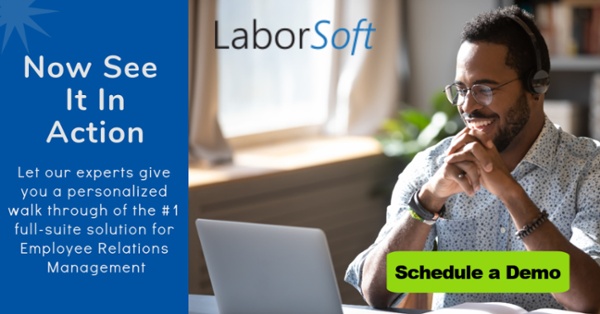What Your Company Can Learn by Tracking Employee Turnover
Read Time 4 mins | Jan 1, 2024 | Written by: Frankie Kourtis

HR departments stand to gain a lot by tracking employee turnover. Valuable data can be collected and deeper insights drawn to reveal the potential source of the turnover, whether it be job dissatisfaction or other more personal reasons. This key HR metric can help companies assess and prioritize changes or adjustments to their culture or practices in order to decrease attrition and ensure retention of employees in the future.
Ultimately, employee turnover can result in the wasting of resources and training, as well as put a drain on your company’s bottom line.
What is Employee Turnover?
Your employee turnover rate measures the total number of workers who leave your company over a set period of time (often per year). This metric includes both employees who have exited voluntarily (quit or retired) and employees who exited involuntarily (such as those who were terminated or laid off).
It should be noted that "turnover" is not the same as "attrition." If your concern is employee attrition, you'll track voluntary exits only — purposeful workforce reductions and firings would not be counted.
What is the Key to Reducing Employee Turnover?
If you intend to reduce employee turnover, the first step is to take a hard look at the data on your company's turnover trends. Talent, or workforce analytics — as it’s called — is the process of accessing data from large sets of people in an organization and analyzing statistics and trends using technology and expertise to make better, more informed decisions through enabled reporting.
Data collected could focus on employee demographics, performance benchmarking — such as project successes or failures — investment payoffs or ROI, strategy planning and risk evaluation, all viewed from an angle that targets things like total talent attrition, retention rates, and more discrete employee turnover metrics.
How to Track Employee Turnover: Collect a Wide Range of Data
Take time in collecting data and determining how to calculate employee turnover in a way that will reveal the best opportunities for your company. When considering talent analytics, there are at least five key areas that you should be factoring into your analysis:
1. Differentiate Voluntary and Involuntary Turnover
Voluntary separations are based on a number of personal prehow ferences that should be accounted for. Some of these reasons have to do with a changing business landscape or model, or even revenue which can be thought of as involuntary as well. However, it’s the involuntary disciplinary dismissals that have a huge impact on this type of analysis. These points of reference can help to determine hiring mistakes or used to adjust procedures accordingly to minimize future terminations.
2. Track the Department or Title of Lost Employees
Labor turnover trends in a particular department or in management roles may reveal that the level of training being offered during employees’ tenure must increase or be augmented to avoid loss of key personnel.
3. Don't Forget EEO Considerations
Breaking data down by familiar EEO considerations like age, race, and gender specifics can prove useful in tracking any leave and departure movement by particular minority groups, median of age range, or even gender. High employee turnover in this area is a red flag and could signal increased risks of costly mitigation, should there be any EEO complaints. Ageism in the workplace, often overlooked, is a growing risk worth paying attention to.
4. Record Data on Tenure & Longevity
Analytics on averages of the length of tenure, or how long an employee stays at the company on average, can also help you better understand HR recruiting and the possible breakdown of employee retention rates.
5. Take Note of Separation Dates
Companies can actually see an uptick in turnover during certain times. Assessing resignations after annual bonuses are distributed, seasonality, or similar occurrences could provide a snapshot of anomhow to tralies or patterns for HR based on work production cycles and salary schedules.
Turn Over Your Turnover Findings
After collecting this pertinent data, it is important to aggregate it in a user-friendly format so that it can be digested and disseminated to the rest of the organization. The cost of employee turnover is high. According to Gallup, the cost of replacing an individual employee can range from one-half to two times the employee's annual salary. Another study reported by Forbes was slightly more optimstic, showing that it costs an average of 33% of an employee's salary to replace them. Either way, this represents a large expense.
Lucrative information on current and historical reasons for employee turnover can help HR departments identify warning signs or leverage the insights they’ve learned to predict turnover trends in the future.
LaborSoft’s innovative technology is one of many integral solutions that keep your business in business. Our employee relations analytics, case management workflows, and our central repository of documentation mitigates risk of operational bottlenecks, costly lawsuits, and legal ramifications stemming from HR issues and complaints. Our maximum-security protocols protect employee data and company assets all times.
Contact us for a customized demonstration and learn how LaborSoft can help you improve communications, build a more collaborative, safe, and supportive workplace, while reducing the likelihood of costly litigation.
This blog was originally published on July 12, 2018. It was updated on 1/01/2024.


